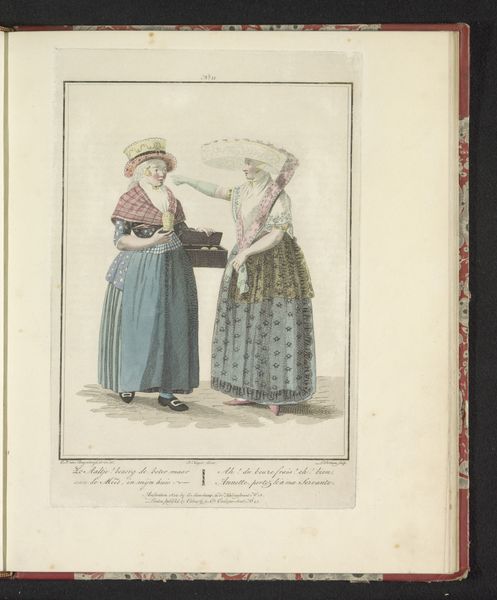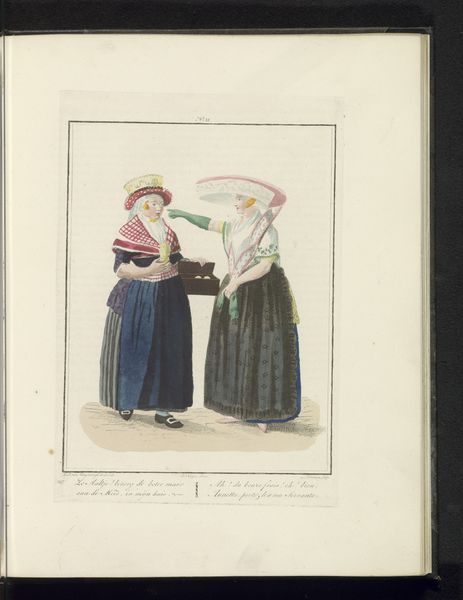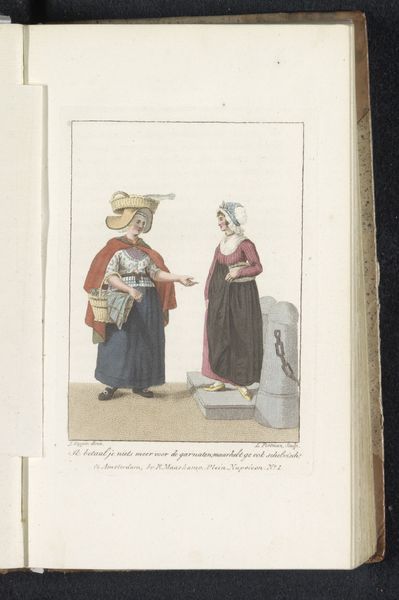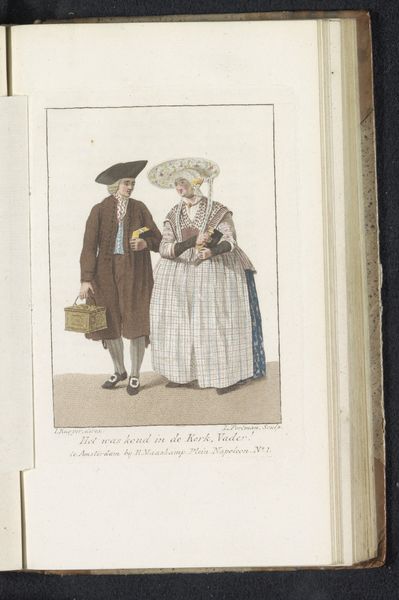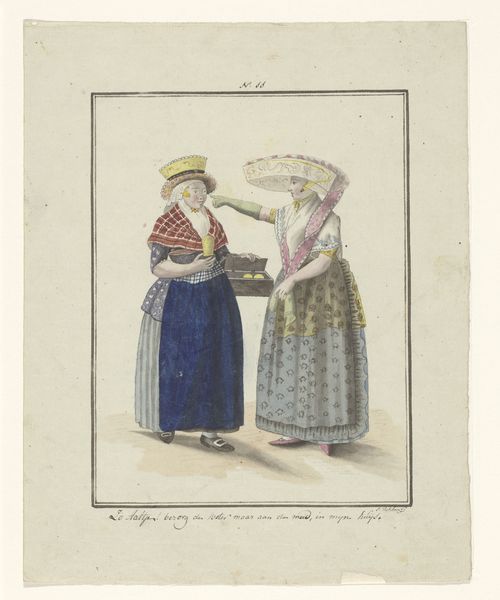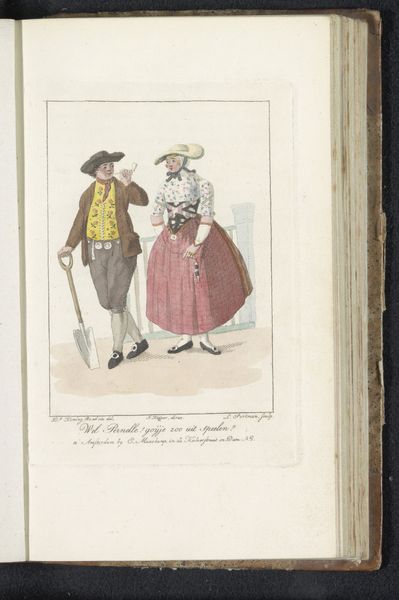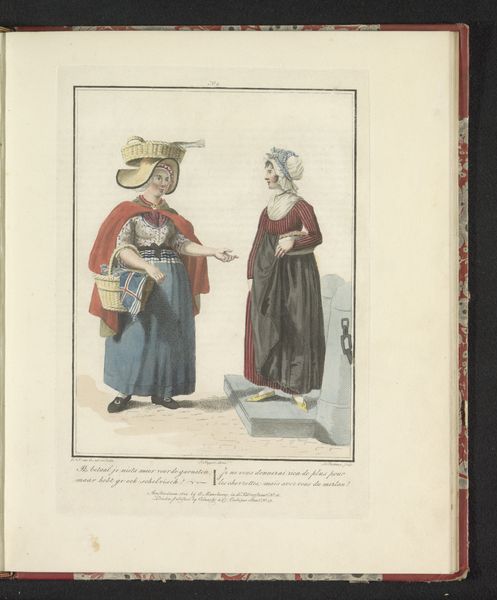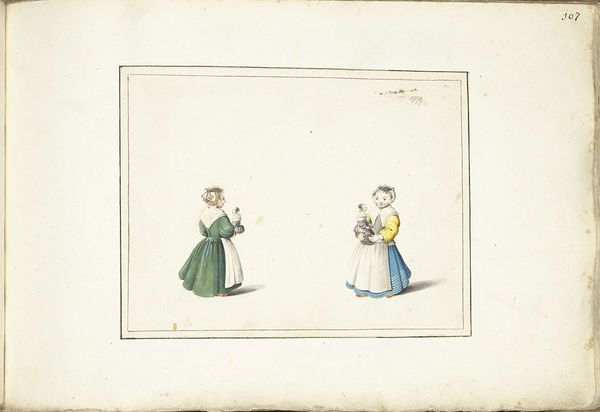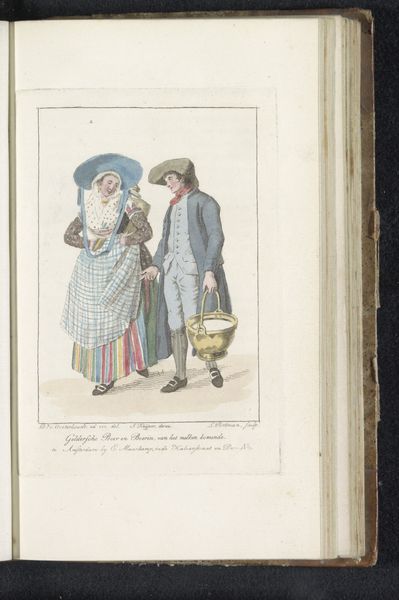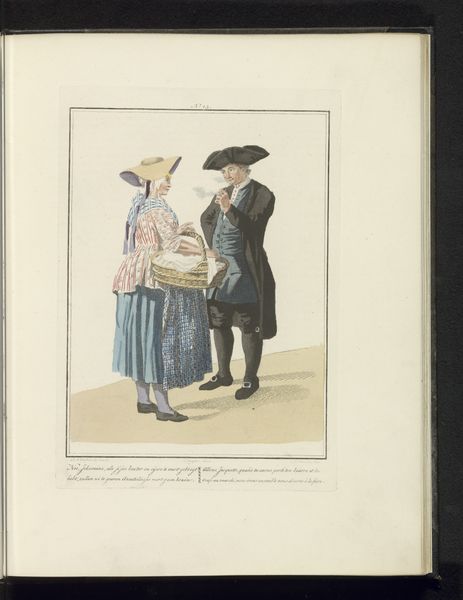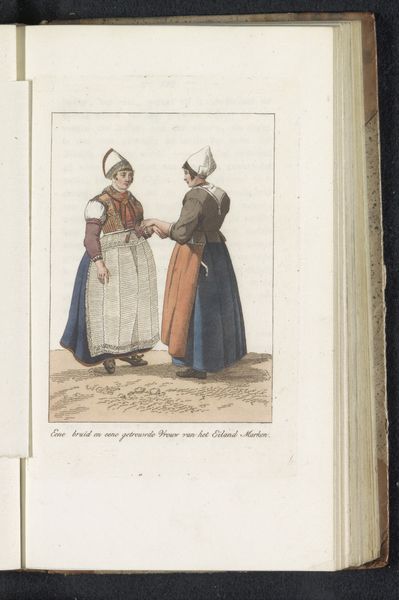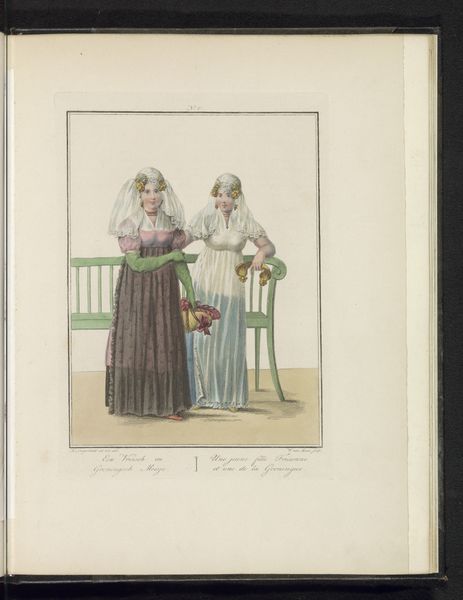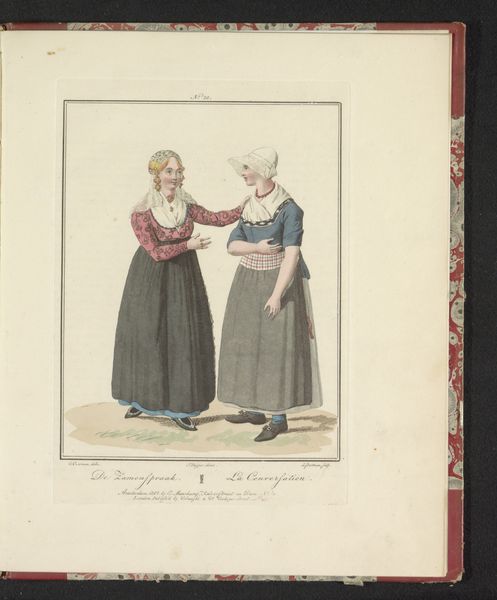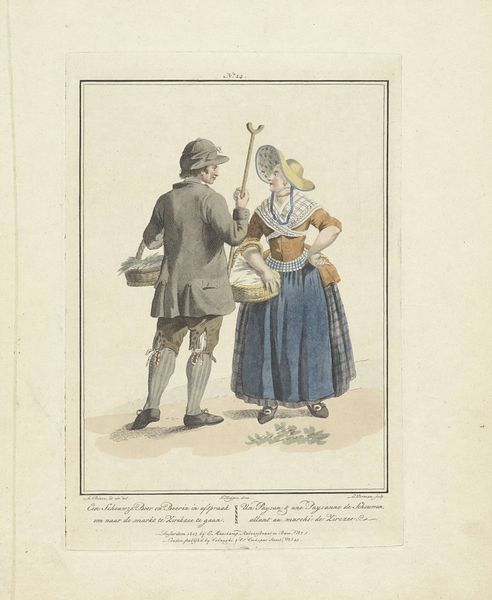
drawing, watercolor, pencil
#
portrait
#
drawing
#
figuration
#
watercolor
#
coloured pencil
#
group-portraits
#
romanticism
#
pencil
#
costume
#
genre-painting
#
northern-renaissance
#
watercolor
Dimensions: height 138 mm, width 93 mm
Copyright: Rijks Museum: Open Domain
Ludwig Gottlieb Portman made this print of a butter seller in Friesland sometime around the turn of the nineteenth century. The Frisian woman is depicted here in conversation with a customer. These kind of prints were very popular in the Netherlands, and, more widely, throughout Europe. They were often collected into books depicting people in traditional local costumes. The image presents the butter seller and her customer as figures of the Dutch countryside, as picturesque symbols of regional identity. Think about what such images might have meant in the context of their time: the Netherlands was undergoing major political changes, with the Batavian Republic giving way to the Kingdom of Holland in 1806. These images helped to define and preserve a sense of Dutch identity at a time of political uncertainty. They helped to give concrete form to abstract ideas about what it meant to be Dutch, or Frisian, connecting the nation to specific places and traditions. In order to understand the meaning of this print better, we can look at other similar images, as well as texts that describe Dutch society and culture at this time.
Comments
No comments
Be the first to comment and join the conversation on the ultimate creative platform.
